A baseball game has two parts: baseball fielding and batting. The batting team is called the offensive team, and the fielding team is called the defensive team.
However, today everything we will talk about the baseball fielding team. There are tons of things that are related to baseball fielding.
The main responsibilities of baseball fielding are divided into two parts: defense and catching. The fielding positions are pitcher, catcher, infielder, shortstop, and outfielder. Single play, double play, triple play, etc., are some important terms for baseball fielding.
So you see, there are a lot of things. As a baseball professional, I always love to write and talk about baseball matters. Regarding my baseball enthusiasm, I will talk about baseball fielding and give some pro tips on improving baseball fielding.
So, no more ado. Let’s jump to the point.
What Is Fielding Meaning in Baseball?: What Do Fielders Do in Baseball?
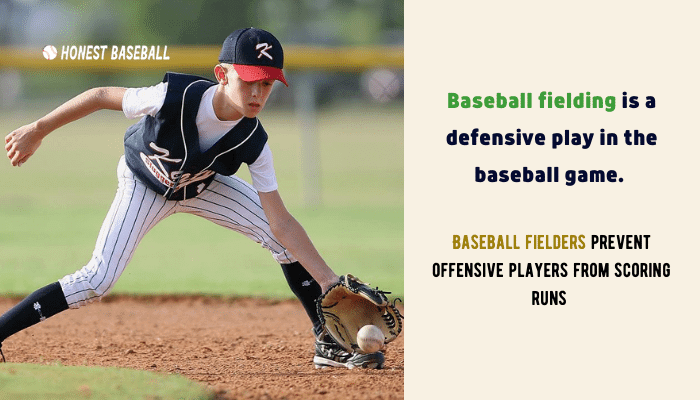
Figure 01- Baseball fielding is a defensive play in the baseball game
Fielding meaning in baseball is the term used to describe playing a defensive position in the game. As in cricket, the objective of fielding in baseball is to keep the offensive teams (the hitters) from scoring runs and to put them out of the game.
Therefore, fielding is one of the two most important aspects of the game of baseball. The fielding squad is responsible for fielding for one-half of each inning. The fielding or defensive team gets to bat after the fielding portion of the game has been completed.
In plain language, “the fielding” refers to the act of catching and holding the hit ball before throwing the baseball onto another fielder. This is for attempting or doing out the baserunner(s).”
The fielders of different baseball fielding positions must be able to catch the balls perfectly to prevent the advance of baserunners. Otherwise, the baserunners will advance the bases, bringing the most important “home runs” for the offensive team.
As the fielders also need to throw the ball for fielding, they must be capable of doing it fast and efficiently. Fielders need to do many tactics while fielding. They need to jump, fly, slide, run, dive, and so on to catch a ball efficiently and perfectly.
Different position fielders have different responsibilities. An outfielder is responsible for catching and throwing a long-distance ball, whereas a baseman needs to catch it timely and tag it to the baserunner(s) to get them out.
On the other hand, pitchers and catchers have different responsibilities than infielders and outfielders.
By the way, baseball fielding actually works as groups. Here everyone is linked to each other to bring a fruitful outcome.
Now, if we want, we can mainly divide the fielding roles into two main categories. They are defense and catching.
The Defense in Baseball Fielding

Figure 02- Baseball fielding positions
Mainly, the fielding and pitching two are exactly the defense roles. Though, the pitching also works to get strikeouts of the batters.
By the way, the main objective of defense is to prevent getting runs by the batter and baserunners. More specifically, the entire baseball fielding defense system is formed with 9 different fielding positions.
Here is the list of them:
- Pitcher
- Catcher
- First baseman
- Second baseman
- Third baseman
- ShortStop
- Left fielder,
- Center fielder, and
- Right fielder.
No worries, I will explain each and every position in a later section.
If we light up the defense, we can see some precise objectives of it.
- Make sure the batter cannot advance the bases. To do so, the pitcher needs to strike him out. Also, the other fielders will try to prevent him by tagging, tagging out, or catching out.
- Along with the batter, the baserunners must also be prevented from advancing the next bases by forcing, tagging, or throwing out.
If you notice, you will see that the pitchers and catchers mainly show their responsibilities when the batter is on the plate. On the other hand, the other fielders mainly try to prevent baserunners from advancing the bases.
According to baseball rules, the offensive team will bat until they get three outs of their batters. After three out completion, a half inning ends, and the fielding team gets to bat for the rest of the half inning.
Additional read to know more about innings numbers in a baseball game: How Many Innings Are There In A Baseball Game.
Catching in Baseball Fielding
The catching in baseball is grabbing the ball when it travels in the air and is hit by the hitters. Expectedly, the fielders try to make sure they catch the ball when a hitter or batter hits a pitched ball.
By the way, putting it simply, fielders are allowed to use their hands and baseball gloves to catch the balls. Aside from these two, they cannot use their caps, pockets, shoes, sunglasses, or any part of the baseball uniforms they wear.
If you, as a fielder, either drop the ball or the ball makes contact with the ground while you are attempting to catch it, the ball will not be caught. You don’t need to be concerned since the umpire will determine whether or not the ball was caught by analyzing the holding time.
Consequently, the fielder is responsible for ensuring that he has complete control over the ball.
Defensive Baseball Fielding Positions
When we are talking about baseball fielding, the baseball fielding positions are simultaneously essential to know about. A baseball defensive team has 9 fielding positions.
All they have is baseball field position numbers or baseball fielding numbers. Let’s discuss them.
Pitcher
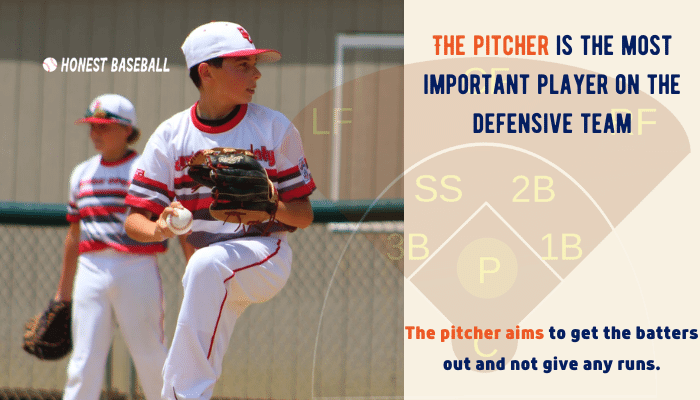
Figure 03- The pitcher is the most important player on the defensive team
To be frank, the pitcher is the most important player on the defensive team. The pitcher is the player who pitches balls toward the batters from the pitching mound. The baseball game starts with the pitching pitchers. Also, pitcher is one of the most hardest positions in baseball as well.
The pitcher aims to get the batters out and not give any runs. As I have mentioned, the pitcher is the most crucial defensive side player; he has the number 1 among the baseball fielding numbers.
By the way, there are different types of pitchers. Starting pitcher, reliever or closing pitcher, middle reliever, lefty specialist, setup man, etc., are some of their types.
However, as the pitcher needs to check the runs and get the batters out, they must pitch accurately and quickly. Sometimes, speed is the main power of pitchers, sometimes curve, sliding, or other types of spinning balls.
By the way, a pitcher can practice in a group, or practice pitching alone to enhance his capability.
On the other hand, a competent pitcher should be able to accurately target various areas of the strike zone with their pitches. Persuading the opponent that they have made a mistake by using sophisticated and cunning strategies produces quick results.
Though there are different pitchers, starting and closing are the most important ones.
Additional Read Regarding best pitching types: What Are The Best Pitches To Throw In Baseball?
Starting Pitcher
The game is typically started by the starting pitcher, also known as the starter. The starter is responsible for throwing for a number of innings all at once. A starting pitcher has accumulated a wide range of experience and is adept in a variety of pitch-controlling techniques.
When the starting pitcher in a baseball game becomes exhausted, the defensive team moves on to the relief pitcher.
Relief Pitcher
When the starting pitcher takes a break, the relief pitcher takes the mound. In addition, there are other categories of pain medications. Long relief, intermediate relief, and closer are all included in this category.
The long relief is the pitcher who throws for a very long duration. In most cases, the middle relief will pitch in the late innings of the game, but they will not complete the game.
On the other side, the closer is essentially an experienced reliever who competes for the opportunity to record the game’s last out.
Speed is one of primary ars of pitcher. If you want to increase your pitching speed, you can check out How To Increase Pitching Velocity By 10 MPH | 25 Proven Tips.
Catcher

The catcher is said to be the “General of Baseball Fielding.” In baseball, the catcher stays in the catcher’s box behind the home plate, where the batter stands.
Catchers directly catch the balls that come from the pitchers’ pitches. As the catcher has to catch most of the balls, a great catcher is a master of fielding. For more ease, you can compare the catcher in baseball to the wicket-keeper in cricket.
By the way, the catchers get the number 2 among the baseball field position numbers. The catcher’s position is the best position on the baseball field.
A catcher has unobstructed views of the whole playing field and often assumes the role of team leader for the defensive players. From his vantage point behind home plate, he has a complete view of the outfield.
In addition to that, he calls out instructions to the pitchers using hand gestures. However, the decision to throw depends on the power of the pitcher as well as the mechanics of the pitch.
In addition to all these things, catchers need strong muscles since they have to immediately capture the fastest ball and push with their full bodies for an extended period on their legs. Additionally, you cannot run over the catcher in high school baseball.
When things are going poorly, the catcher provides the pitchers with the inspiration and confidence they need to keep going.
In contrast to the other field players, the catcher must wear special catching equipment for safety. The equipment used by catchers comprises, among other things, a chest protector, knee protection, shoulder pad, and catcher’s mitt.
Additional Read: Learn How To Play Catcher In Baseball Like A Pro.
First Baseman
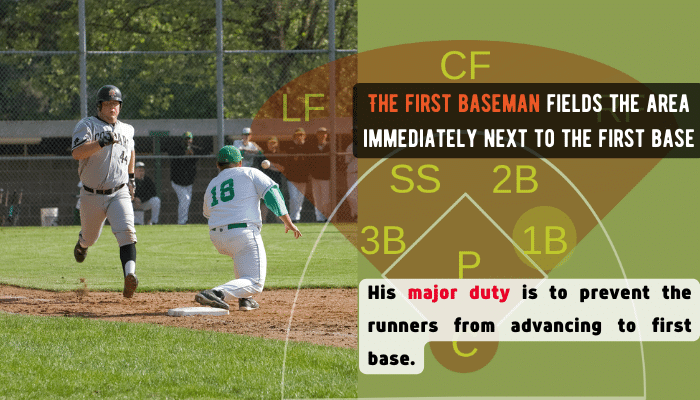
Figure 05- The first baseman fields the area immediately next to the first base
In baseball and softball, the first baseman is the defensive player who fields the area immediately next to the first base. His major duty is to prevent runners from advancing to first base while he is stationed at the plate.
This indicates that he is responsible for ensuring that the batter does not touch first base while the batter is advancing. The first baseman in a baseball game is assigned the number 3 since it corresponds to his position on the baseball fielding. The position of the first baseman is abbreviated as 1B in baseball lingo.
The first baseman is often the tallest player on the field and, with the exception of the pitcher and catcher, the most engaged and aggressive player overall in the game. In baseball, the first base may be played by either a right-hander or a left-hander; however, left-handers have a better chance of being successful in this role.
For those who are curious, those who write with their left-hand wear gloves in their right hand, while those who write with their right-hand wear gloves in their left hand. Because they are responsible for catching many balls at once, first basemen need to be experts in the position.
On the other side, one of the most powerful hitters on the squad is the player who plays first base. They often bat for power, and their stats include home runs, doubles, and other such achievements.
If the first baseman is performing at a high level, the team will have a greater number of assists and will commit fewer throws and mistakes.
By the way, the player who plays first base may also be referred to as the cornerman or the first sacker.
See Also: Are Pitching Machine Good for Batting Practice?
Second Baseman
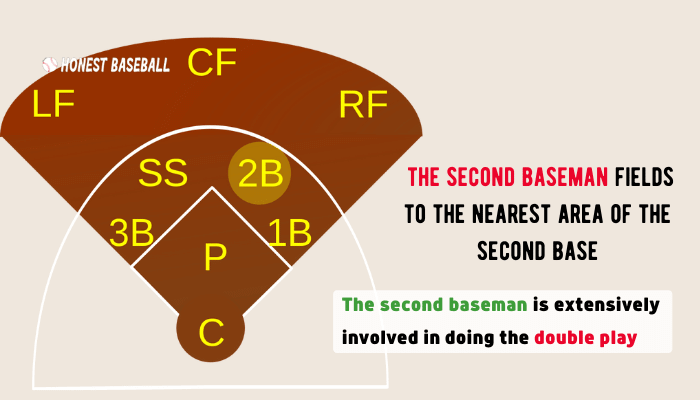
Figure 06- the second baseman fields to the nearest area of the second base
The name shows the objective of the second baseman. Like the first baseman, the second baseman fields to the nearest area of the second base. The spot is mainly among the first and second bases.
However, in the baseball position number system, the second baseman is assigned number 4 for him.
Just so you know, a middle infielder is another moniker for the player that plays second base. The second baseman is responsible for covering the middle infield and the bases between the first and second.
The second baseman is extensively involved in doing the double play and needs to cover a wide space. Also, they need to release the ball too quickly though they don’t need to throw a long way.
Unlike the first baseman, the second baseman is basically a right-handed thrower. In baseball history, only 4 left-handers have played as second basemen till now.
As a side note, under the baseball fielding number system, the number 4 is the position that is designated for the second baseman. In baseball, the second baseman’s position is sometimes referred to using the abbreviation 2B.
Because second basemen are not needed to throw the balls over very far distances; they do not need to have particularly powerful muscles because of this requirement.
On the other hand, the second baseman is often responsible for fielding in place, making plays such as collecting line drives or dung flies. In addition to that, he fields ground balls and tosses them to get baserunners out of the way.
He is very aggressive and fun for the double plays when the team only has one out. While the second baseman’s primary role is that of a defensive player, they are also expected to contribute offensively to his team with the bat.
Third Baseman

Figure 07: The Area of the third man in baseball
The third baseman defends the area near the third base. The third base is the last base for the baserunner before completing a home run on the home plate.
The third baseman is abbreviated 3B and gets the baseball fielding position number 5. The baseball position number is used to ease the scoring system.
On the other hand, the third base also goes by the name “the hot corner.” It is due to his position that he stands there: stationed in the position closest to the hitter at home plate. If there is a bunt, then the distance will be cut down even more.
Because of this, the third baseman has to be brave, have excellent hand-eye coordination, and be able to quickly reflect on what’s happening because a hit ball will come at him at a speed of 120 miles per hour.
Also, the third baseman must have a pair of accurate arms to throw the ball to a long distance. For example, the first base or to the second base for a double play.
Right-handed players have an advantage when it comes to playing third base since they do not have to turn their bodies to face second or first bases. This makes the position ideal for right-handed players.
By the way, Mike Squires, one of the former baseball players, was a left-handed third baseman between 1982 and 1983. He played throughout those years.
Third basemen, on the other hand, are expected to be able to field fly balls in both fair and foul territory.
The charming fact is that the third basemen are usually bigger in height. Though the third basemen are quick in throwing, they are not that quick in moving because the third baseman position is such a position that doesn’t demand faster fielders.
Therefore, you may position your player who is the least mobile at third base, where they will have the greatest power in their hands.
ShortStop
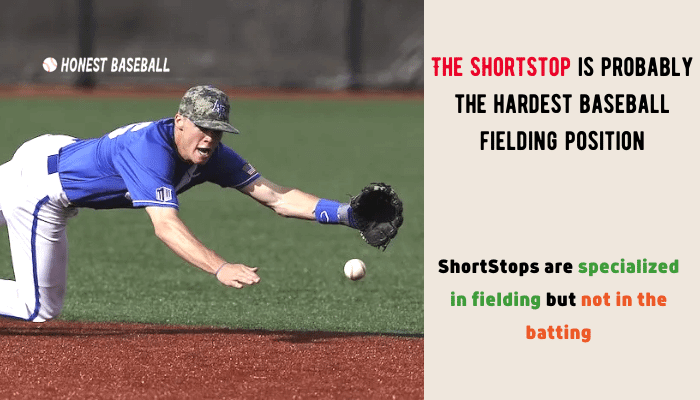
Figure 08- The ShortStop is probably the hardest baseball fielding position
The shortstop is the fielder who plays the position that is located between the second base and third base. The baseball positions for shortstop has been abbreviated. It is one of the most difficult positions to play on the field.
Traditionally, athletes who excelled in the field but struggled at the plate have been given the role of shortstop in baseball. The batting position of shortstops is often at the bottom of the line.
Shortstops, by the way, are also putting up solid numbers at the plate in today’s game. And on occasion, their batting order is adjusting for the better.
Regarding the baseball fielding numbering system, the shortstop is given the number 6.
However, since most batters hit right-handed, the ball tends to travel in the direction of the shortstop. They take great pleasure in pulling or ever-so-slightly pushing the balls toward the shortstop.
Because they have to make a rapid transfer of the ball and a long throw to first base, shortstops need to be nimble, quick, and powerful athletes.
Much like the second baseman, the shortstop is an important cog in the double-play machine. To catch a baserunner, they have to cover the greatest territory possible in their immediate vicinity.
On the other hand, the shortstop is the primary communicator to the outfield players owing to their strategic location on the field.
The shortstop is tasked with a great deal of responsibility when it comes to fielding. They contribute to the process of relaying the ball that has been fielded in the outfield to the intended base. When numerous players are within range of the fly ball, the shortstop has precedence over the other players because of his position.
Note: The terms 1B, 2B, 3B, and shortstop are all the parts of infield position.
Left Fielder
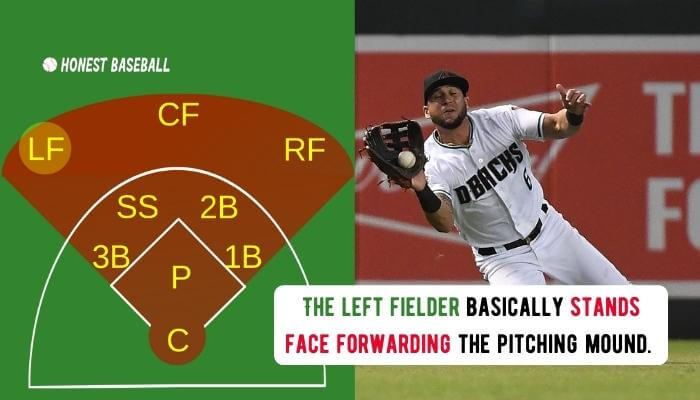
Figure 09- The left fielder basically stands face forwarding the pitching mound
Till now, we have been discussing infield fielding positions. Now, the rest of the positions are outfielders.
The left fielder is one of the outfielders who are abbreviated LF. According to the home plate and right-hand batters, the left fielder stands in the outfield of their left side. The left fielder basically stands face forwarding the pitching mound.
By the way, in the baseball fielding numbering system, the LF gets the number 7.
As an outfield member, the left fielder is responsible for covering a large area. One of the difficulties for players is to grab fly balls that are beyond their head and yet within sprinting distance.
Additionally, the LF has to have a strong ability to determine where the ball is located while it is in the air. Because. When a ball is hit into the air, it goes a great distance and disrupts the track.
Aside from this, the left fielder also needs to softly allow the flying ball a swift landing and prevent advancing the baserunners.
Along with the physical ability, the left fielders also need to adjust to the different foul territories of different ballparks.
However, the left fielder must have charming fielding skills rather than powerful throwing. It is because they can pass the ball to the shortstop and do not need to directly prevent the advance of the baserunner.
By the way, the left fielder often backs the shortstop as they face some quick hits or bunts. Also, the left fielder backups the catcher during the throwing when the catcher tries to prevent the third base from stealing.
By the way, what are the basic skills in baseball? The interesting and valuable discussion could be helpful for the youngsters. Check the guide Basic Skills In baseball To Learn To Tailor The Game for a more detailed explanation.
Center Fielder
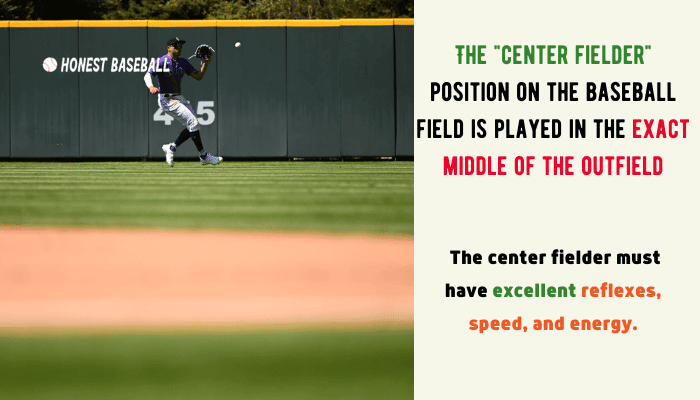
Figure 10- The center fielder position on the baseball field is played in the exact middle of the outfield
The center fielder also serves as one of the three outfield positions. The position of center fielder has been shortened to CF. The “center fielder” position on the baseball field is played in the exact middle of the outfield, between the right and left fielders.
The number 8 is given to the center fielder in the baseball fielding numbering system.
By the way, I’ve previously highlighted how important it is for the outfielders to cover a significant amount of ground in the area. As a consequence of this, the center fielder, much like the left fielder, is required to have excellent reflexes, speed, and energy.
The center fielder is responsible for fielding fly balls that are hit high above their heads while in motion. In addition, the CF must have pinpoint precision when it comes to throwing balls because of the great distances they may cover.
You can see how important it is for the center fielder to have a good balance of speed and accuracy in their baseball throwing.
When we go into more specifics, you’ll notice that the center fielder is technically responsible for covering more ground than the other two outfielders combined. They are also responsible for coordinating between the left and right field players.
Consequently, the potential collision that would have occurred when catching the fly balls does not occur. Instead, the CF positioned him behind the outfielders as a backup outfielder.
Additionally, the center fielder can tell the other two outfielders to back off when he has a better chance of catching a fly ball on his own.
Right Fielder
The last position in the corners of the outfield is the right fielder (RF). Mostly, the right fielder has to have the strongest set of arms of all the fielders. This is because a straight throw from the right corner to the third base requires a player to cover the possible distance.
The region of the home plate that is direct to the right of the right fielder is known as the right outfield. In essence, the right fielder is facing straight out away from the pitcher’s mound.
The number 9 corresponds to the position of the right fielder in the baseball fielding position numbering system. The right fielder, much like the center fielder and left fielder, is responsible for covering a broad area.
They are required to have the ability to catch fly balls. Any fly balls that go above their head as well as any fly balls that have a reasonable distance to run.
It is a significant distance since the stands are around 250 to 300 feet away from home plate. As a result, precision is one of their essential talents.
Aside from this, it is the responsibility of the right fielder to protect the first baseman from throws made by the catcher as well as the pitcher. The backup is also essential in situations where the first baseman is sprinting between the third base and home plate.
On the other hand, there is a discussion going on concerning right fielders in the minor levels. People believe that right fielders in youth levels are the least talented players, in contrast to those in major league baseball.
Major League Baseball right fielders are frequently one of the team’s best hitters.
Baseball fielding positions need more explanation for comprehensive understanding. You may check the guide on Positions On The Baseball Field Explained By A Coach.
How to Field a Baseball: Baseball Fielding Tips
As we have described, all baseball positions need to do their best in their own positions. The great players know how to field. But, if you are learning baseball fielding and need tips on improving your fielding ability as well as throwing baseball, you may check this out.
There are some excellent tips for you to improve your fielding skills. Let’s have a look at them.
Baseball Fielding Tips: Tip #1- The Secret is to Use Your Feet
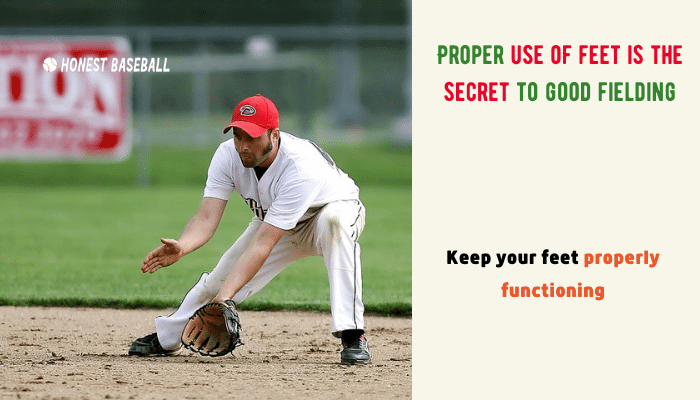
Figure 11- Proper use of feet is the secret to good fielding
We have repeatedly stressed how important it is for the fielders to have strong hands. You could believe that having solid hands is the only factor in being successful on the field. However, not necessarily only this one.
You may also notice that the baseball fielder has to be quick on their feet. Indeed, this is yet another very important facet for fielders to consider. In order to walk about, you need a set of sturdy feet. As a result, it is clear that the way you walk is quite significant.
In the end, the more powerful your feet are and the more easily they can be moved, the smoother their performance will be in other portions. If you are able to assure a quick motion while maintaining fluid footwork, your glove and hand will perform effortlessly.
Imagine for a moment if your feet suddenly stopped working; everything, including your body and your hands, would tumble to the ground.
So, remember, you must keep your feet functioning. Take special care of your foot health. Exercise your feet and footwork on a regular basis. Be careful not to hurt both your knees and your feet.
Baseball Fielding Tips: Tip #2- Position your Glove for Maximum Benefit

Figure 12- Put your glove in a perpendicular position rather than a parallel one
The baseball gloves fielders wear are the most crucial piece of equipment they bring to the field. Therefore, you should put your gloves on as much as possible throughout the process.
In keeping with the theme of this post, fielding ground balls is one of the most crucial components of playing the field. By the way, in order to grasp the ball, you need to put your hand inside the glove and then press your wrist heel forward.
Put your glove in a perpendicular position rather than a parallel one. Because of this, you will have better control over the ball. Consequently, the difficulty of the challenging hop will be reduced as the ball rolls up from the ground on your hand.
As a side note, it’s possible that many fielders weren’t first instructed on the glove position method. However, remember that mastering the art of effortlessly catching baseballs requires a baseball fielding glove that is worn correctly.
A Recommended Defensive Drill for Infielders
By the way, you may use this piece of advice to enhance both the location of your gloves and the movement of your feet. Begin playing the fielding position using both your hand and glove. Adjust yourself so that you are in the position to do this.
As soon as you touch the ground with your hand and the ground ball makes contact with your glove, just shift your weight from one foot to the other. Remember that you shouldn’t move your hand or glove at this point.
Catching the ball will become much easier for you to learn if you do this drill.
How to Improve Baseball Fielding: Some Effective and Pro Tips for Ground Ball
As a professional, I would like to give some precise tips on improving your baseball fielding journey. By the way, each of the tips demands a full article to explain properly. We will surely do that in separate articles very soon.
Here, let’s see the brief at a glance to understand the basics of the doings.
Don’t Be Hesitated: Be Natural
One of the most important facts is to become and stay natural in baseball fielding. From my personal experience, I would say it more deeply here.
When I started my career, I was supposed to be less confident when the ball came to me. I couldn’t be natural and this affected me psychologically.
Most of the time, I had shaken seeing the ball coming. In this case, one of my favorite coaches, Tom Hardy, helped me a lot while I was young.
He worked with this issue and helped me to overcome the hesitation and enhance my confidence.
Remember, it is just a ball, not a bomb. So, be sturdy and confident while it comes. Spread your hand to catch the ball while reaching.
Also, keep your glove hand on the side of your fielding hand. Don’t make a cross with your gloved hand. Also, don’t keep the glove center line of the body.
Just keep it on the hand side you are wearing the glove. This makes catching baseball fielding freer because the glove can perform its part without any obstruction.
Keep Your Hands Extended
Make an effort to utilize your outstretched hand. There are primarily two causes that led to this statement being made.
If, while attempting to catch the ball, you stretch your hand rather than keeping your hands in front of your line of sight, you will find that the ball is much simpler to catch.
One such reason is to be in a position to grab a hop by backing up. For example, if the ball happens to jump in your direction at any point, you may rapidly raise your hand up to capture it if it comes close enough.
Start Baseball Fielding From Low
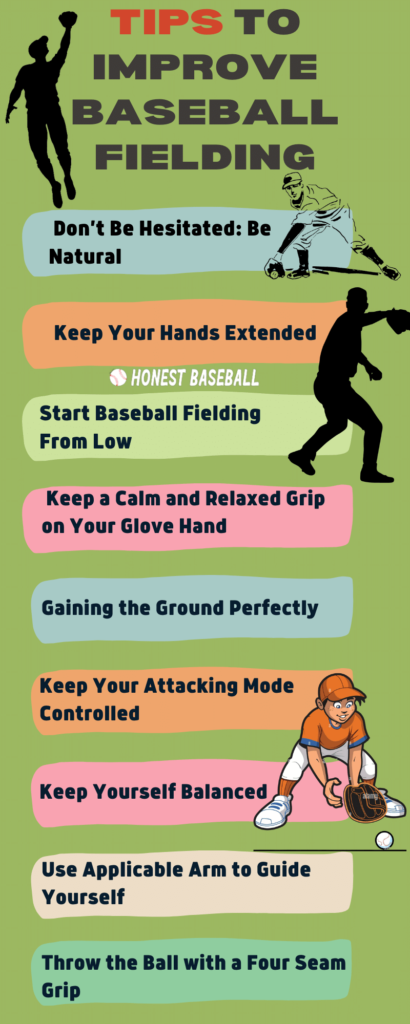
Figure 13- Tips to improve baseball fielding
Whether the ball comes from a hitter, or a throw from your other mates, start your approach from the ground. Now, try to catch up the ball with a mannerly wide glove perpendicularly.
This is a highly professional and challenging technique. But, if you can master it, moving up will get easier.
Keep a Calm and Relaxed Grip on Your Glove Hand
In the same way that you should be natural, you should also maintain your fielding hand relaxed. When you are comfortable, you may improve your ability to react quickly and move quickly.
Your less confident mood can prevent you from acting on time. However, keeping one’s mind and body calm will make catching easier. This will also guarantee that there is no tensing up and no struggling to catch up with the ball in baseball fielding.
Gaining the Ground Perfectly
Gain ground during this step up to the point when the hop forces you to halt. Make a decision whether you will play the short hop or the long hop. In addition, this step assists you in developing the optimal angle at which to collect the ground ball.
In this particular situation, the optimal solution would be to create an angle in the form of a “V.” As a result, you will get the ball to your preferred side (the left side for left-hand catching and the right side for right-hand catching).
In addition to that, the angle puts you in an advantageous position. Because of this, you are now operating in an easy-to-throw mode.
Keep Your Attacking Mode Controlled
An attacking attitude is the best strategy to dominate the opposing team. I always prefer attacking in baseball fielding, batting, pitching, or whatever.
By the way, make an attacking approach when you try to catch a ground ball. But, make sure you control your attitude, not it controls you.
Make sure you dominate the ball. Let not allow the ball to dominate you psychologically.
Keep Yourself Balanced
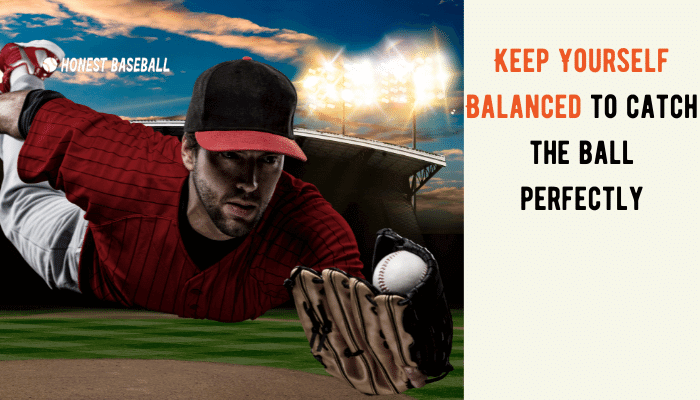
Figure 14- Keep Yourself Balanced to catch the ball perfectly
Once you get possession of the ball, you shouldn’t rush to toss it. Bring the ball up to your chest as a first step.
In this scenario, maintaining your equilibrium is helped by keeping the ball in the center of your body.
As a consequence of this, you improve both your position and your state to successfully throw the ball to the target.
Use Applicable Arm to Guide Yourself
Now, it’s time to throw the ball to a base. If you are a right-hander, use your left shoulder and elbow to turn yourself toward the base. Opposingly, use your right side to turn yourself to the base.
Throw the Ball with a Four Seam Grip
In conclusion, when you throw a fastball, you should always grasp the ball with a four-seam fastball grip. When they toss the ball, the majority of infielders utilize this grip.
It may seem to be challenging, but mastering it will guarantee that the ball travels at the desired speed and precision. The reason for this is due to the grip, which ensures that the ball will never spin more than a quarter turn.
As a direct consequence of this, the ball travels unobstructed to the objective.
The ball may dive, run, or sink if you utilize alternative grips, such as two-seam, curve, slider, or no-seam.
How to Field a Backhand Groundball?
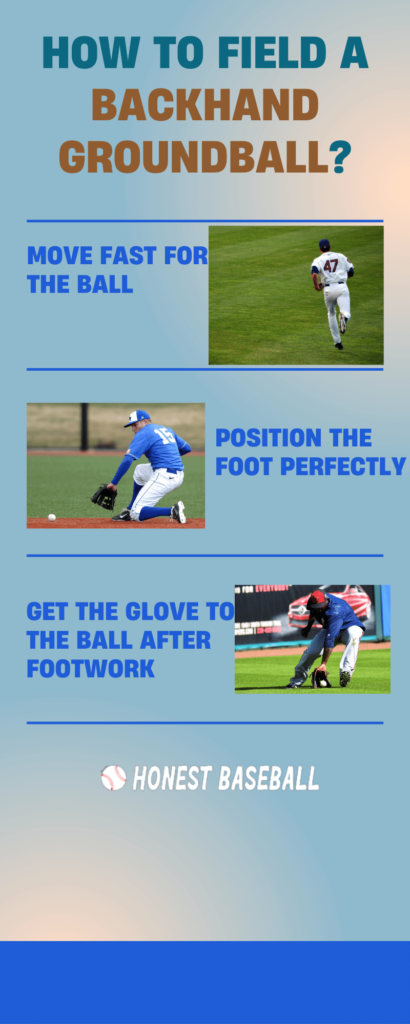
Figure 15- How to Field a Backhand Groundball
Catching a backhand groundball is undoubtedly one of the critical fielding. But, the higher-profiled infielders are masters of it. So, what about yourself to bring some new mastery?
If so, let’s learn how you can catch a backhand ground ball. After knowing the basics, please practice it on the ground more to master it.
By the way, you have to plan the strategy to catch a backhand groundball when the ball is hit. You have to read the movement, measure its route and speed, set up the timing, and so on.
Surprisingly, you have to do such a lotta work within moments. Here are some tips for mastering the catching of backhand groundball.
Move Fast for the Ball
The very first step is the most important thing. You must move fast as soon as the ball hits so that you can beat the ball. So, there is no chance of being lazy or slow here (Sometimes, the balls may come to you directly).
By the way, to beat and create a better angle for the backhand catch, you must move fast. Also, the quick move helps to reduce the throwing distance.
Position the Foot Perfectly
If you are a right-hand thrower (left-hand catcher), keep your right foot in front of your left foot. Conversely, keep your left foot ahead if you are a right-hand catcher.
Get the Glove to The Ball After Footwork
Following completing the balancing footwork and beating the ball, the next step is to catch it. Move your glove toward the ball and grab it as you are in a favorable position to do so.
Check that the ball is positioned between your index finger and thumb. Taking such an assertive stance ensures that you continue moving accurately.
How to Field a Fly Ball?
There are 4 fundamentals of catching a fly ball. If you follow the basics, it would be easy for you to master catching the fly balls. Here are the basics and tips for you.
Judging the Ball
The most crucial part of catching a fly ball is determining its trajectory while it is in the air. A fly ball has the potential to land in any part of the baseball field.
It might be right in front of you or it could be soaring over your head. In addition, the distance you have to go to get the ball may be either short or long.
Therefore, as soon as the batter makes contact with the ball, you must immediately begin determining where the ball will end up. Also, calculate the distance you need to go depending on where the ball will end up.
In passing, the computation has to be finished in a few minutes.
Running After the Flying Ball
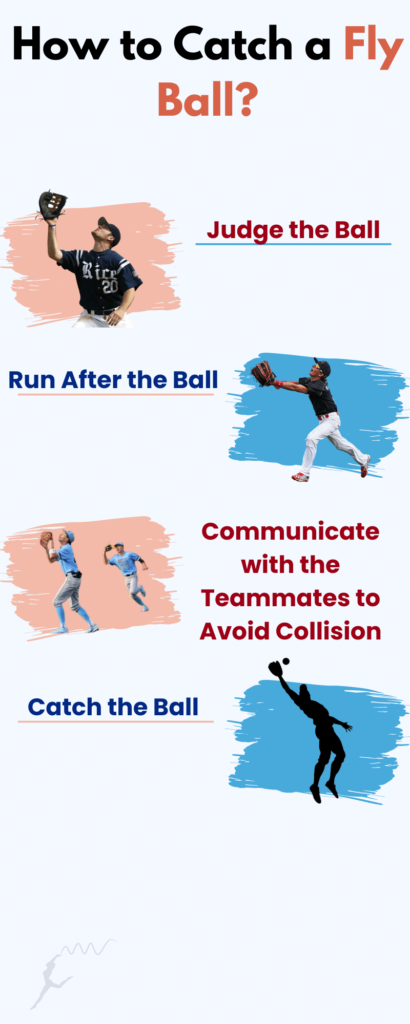
Figure 16- How to Catch a Fly Ball
After completing the necessary calculations and preparations, the next step is to relocate to the location where the ball will ultimately end up.
In this stage of the process, you need to go to the location quickly and get into position to catch the ball. Also, make sure that you are aware of your surroundings to avoid obstructions such as other players, baserunners, or fences.
During the race, watch your glove not slip off your hand and ensure it fits correctly.
Communicating with the Teammate
To catch a fly ball, multiple players around you might run. It is a common phenomenon in baseball and cricket.
So, it must develop a communication process to inform the other player(s) to stop and leave the ball to you. Of course, do it if the ball is in the most favorable situation by your side.
So, ensure a call for the fly ball. Otherwise, you may experience a dark comedy by colliding with other teammates.
Catching the Fly Ball
Now the moment comes. You need to catch the ball flying over your head and landing. So, open the hand with the glove, and target the position where the ball is coming to.
Also, keep prepared your other hand to cover your catching hand and throw the ball after catching.
You should stand a little bit back or to the side of the place rather than directly below it, since this will give you a better view of what’s going on. The process of catching a fly ball is simplified as a result of this.
As an example, if you are a left-handed catcher, you should allow the ball to drop off the left side of your body. It is important to remember to always keep your left leg in front of your right leg.
For the right-hand catchers, they should allow the ball to land on their right side.
You have, without a doubt, obtained possession of the ball at this point. Therefore, why are you so late? You must throw the ball as quickly as you can.
As a side note, before you toss the ball, you need to make one more decision about where you want to throw it. If you play in the infield, you probably won’t need to play the hop-step position, but if you play outfield, you absolutely will.
Baseball Fielding Terminology
Baseball fielding ball terminologies are terms used to understand different aspects of fielding. There are many baseball fielding terminologies to remember as a baseball player.
Professionals and regular players do know them, no doubt. But, if you are new, or want to recall some of them, here are some terminologies for you.
By the way, we have another guide on entire baseball terminologies. You might check them on Baseball Terminology.
Among the baseball fielding terminologies, some are about making a play, they are as follows.
Single Plays
The phrase “single play” refers to a situation in which a baserunner is out at any one of the bases. It is possible for him to be eliminated by a force out or a tag out. By the way, the term “single play” specifically refers to a single out.
Double Plays
A double play occurs when two baserunners are caught in a single play. In essence, double plays are most often accomplished with ground balls.
A baserunner will often approach a base when an infielder is fielding a ball and then throwing the ball to that base. Once the baserunner has been thrown out, the baseman will next toss the ball to the next base in order to throw out another baserunner.
Consider the scenario in which the batter hits the ball to the shortstop. In this scenario, the shortstop fielded the ball and then makes the throw to the second baseman. The baserunner who was attempting to advance to second base from the first base was thrown out by the second baseman.
Following the first baseman’s being put out at first, the second baseman will next toss the ball to the first baseman. The hitter was then thrown out by the first baseman who was in the process of running from home plate to first base.
Okay, the double play could happen in multiple ways. For example, 1-2-3 double play, 1-6-3 double play, 3-2-3 double play, 3-6 double play, 3-6-3 double play, and so on.
For a quick explanation, the 1-2-3 double play means the pitcher(1) fields a batted ball and throws it to the catcher(2).
After retiring the baserunner advancing from the third base to the plate, the catcher throws the ball to the first baseman(3). The first baseman then forces out the batter advancing to the first base from the home plate.
The phenomenon is common with the bases loaded.
Triple Plays
Like the double play, the triple plays mean three baserunners out in a single play. However, this phenomenon is extremely rare in baseball games.
A ball must be hit to the nearest baseman to get a triple play. He will out a batter, and throw it to another fielder. The second fielder will out another baseman and will throw the ball to another fielder for the third out.
Defense
The defense prevents the offensive team from getting runs and out the offensive hitters. Actually, the defense itself holds a huge elaboration. All defensive terms come from the term defense.
Fly Ball
The fly ball is a term that refers to a batted ball in the air. The fly ball is one of the most important terms among the three batted balls. Basically, a fly ball is hit by the batter to the outfield in the air.
Fielders run to the ball and try to catch the ball in the air.
Ground Ball
A ball that is struck by a batter and then falls to the ground is referred to as a ground ball in baseball fielding. Rolling is an option, but so is bouncing the ball. Infielders are basically players from the defensive side of the field who are responsible for fielding ground balls.
Bad Hops
Ground balls with bad hops abruptly and unexpectedly bounce and veer in a different direction. As an infielder prepares to grab the ball, it abruptly bounces and travels elsewhere.
Line Drive
A line drive is a batted ball that flies parallel to the ground. This is neither a ground ball nor a fly ball. It’s a faster ball that is hit by the batters and goes straight through the air parallelly to the ground.
The line drives often allow batters to advance the next base easily.
Infield Fly
A shallow fly ball that is struck and remains within the infield region is called an infield fly. The infielders are successful in catching the infield fly ball.
Shifting
Simply put, shifting means shifting the fielding position for particular and new batters come to the plate. It happens when the fielders know the batter’s intent to hit a certain area. So, the infielders and outfielders adjust their position based on the batters.
Assist
The assist is the phenomenon of throwing a ball to another fielder who records a putout in baseball fielding. The player who touches the ball before throwing it to another player for putout is awarded an assist.
Fielding Error
A fielder will get an error from the official baseball scorer if he cannot succeed in out a baserunner that typical players can. On the other hand, if any fielders make poor fielding or slip batted balls, and that allows baserunners to advance to the next base, they also get an error.
Any dropping of at bat will go against the fielders with an error.
Out
The most desired term for the defensive team. An out is referred to when a batter or a baserunner gets retired by the defensive team. An out could be taken place through different types of outs. They include flyout, strikeout, putout, tag out, force out, groundout, and so on.
Passed Ball
A passed ball is a pitcher’s fault that he cannot hold onto a pitch. As a result, the umpire allows at least one runner to advance to the next base. Though the earned run is not counted due to an error; also an earned run is not counted even for a passed ball as well. However, a passed ball is not an error.
PutOut
The putout is credited to the fielder who physically records an out. A putout could be recorded in different ways like tag out, forceout, and even catching the third strike.
See for more information: What Does PO Mean in Baseball? Coach Explanations.
Some More Terminologies of Baseball Fielding
Around the Horn- Following the completion of an out, the field players celebrate by passing the ball to one another. The term is known as “around the horn.”
Booted: Another term to indicate the error.
Ate em’ Up- A expression of slang when fielders fail to handle a batted ball. It is mostly used when an error occurs by a fielder.
Can of Corn- A situation that arises when a fly ball touches a player in the outfield. As a direct consequence of this, the ball will remain in a gentle position, making it simple and effortless to catch.
Force Play- A situation when the runner must advance for the next base when the batter hits the ball. In this situation, if the baserunner gets out by touching the targeted base while advancing, it is a force play.
Hole in the Glove- Used for dropping a fly ball or missing a ground ball.
Web Gem- Praising the fielders for outstanding performance which also indicated the great web pattern of the fielder’s glove.
Versatile Player/Utility Player- who can play in any baseball fielding position.
Turn Two- Motivate and scream to execute a double play.
Best Position in Baseball Fielding
The answer to the question is subjective. Literally, I shouldn’t mention any position as the best position in baseball, because each and every position has its aspects for performance.
Since having such aspects, the catcher and the pitcher can get some extra attention though.
The catcher stands in such a position he can see the entire field layout and position fielders. He can mentor and lead them and help the fielding plan strategically.
He is also called the master of many baseball fielding techniques. Basically, a catcher signals the pitchers for the right type of pitching over time.
As the best strategic position holder, many catchers lead as a manager for many teams. For Example, Yogi Berra, Steve O’Neill, Connies Macks, Al Lopez, Joe Torre, and Scioscia are some great catchers who also acted as team managers.
On the other hand, the pitcher is another most important position for the defensive team. He is the heart of the team actually. Picher’s pitches are the main arms to get the result in favor of the defensive teams.
Baseball Soft Hands Drills
Additional Reads: Baseball Drills for 7-year-olds | Coach Preferred, Baseball Drills For 10-Year Olds- The Rulebook, Pitching Drills For Accuracy |More Perfection.
Simply put, a soft hand in baseball fielding means getting proper control over the caught ball. It is like, the ball is caught using two hands. After that, allow the hands to go back with the parallel ball speed and not let the ball bounce back from the hands.
With this movement, the energy of the caught ball is dissipated, and the ability to bounce is extinguished. Ultimately, the balls come under the control of the fielder. The fielder then can allow the ball to end its motion in a controlled way.
The phenomenon that happens behind the scene is interesting. The energy of the ball is actually transferred to the fielder’s hand. Comparing the scenario with shock absorbing phenomenon.
By the way, the players must go through proper baseball soft hands drills to master the technique.
Here are some drill suggestions.
Drill #1- Tossing and Catching
First, start with tossing the ball in the air and letting youngsters catch the ball bare hand. As soon as catching the ball, allow them to withdraw their hand to their chest.
By the way, this is the most basic drill to start the practice for soft hands.
Drill #2- Live Practice
After being accustomed to the basic mechanics of the technique, now is the time to implement the technique in the field drill.
Bent your knees, kneel down on the surface, and keep ready your hands. Now let the ball come at the regular speed and catch the ball. Immediately take back your hand and let the speed of the ball decrease.
Make sure you take your glove hand in line with the ball. Continue the drill several times.
Position the glove properly. Keep the web of the glove on the surface perpendicularly, and keep the heel pad top. The right glove angle is a crucial point for a soft hand drill.
Frequently Asked Question
What is fielding in baseball?
Baseball fielding is playing defense to prevent scoring runs by the offensive team in baseball. In fielding, players defend and catch the ball. They also throw the balls to other players to out the baserunner(s). The team that bats are the offensive team.
How important is fielding in baseball?
Baseball fielding is one of the two most important parts of the baseball game. Actually, a baseball game consists of batting and fielding. So, without the fielding side, the game will not occur.
Is fielding in baseball hard?
Baseball fielding is one of the essential skills in baseball. Though I shouldn’t say baseball fielding is hard, you have to practice a lot to master it. Otherwise, it becomes hard.
What is a good baseball fielding percentage?
A numerical representation of the baseball percentage is used to convey it. An excellent infielder in baseball has a fielding percentage of 97% or greater. This indicates that the fielder made at least 970 out of a possible 1000 plays without committing an error.
Final Note
Baseball fielding is among the most important skills and part of the baseball game. The defensive team must go through the baseball fielding in a half inning as a part of the game.
By the way, fielding in baseball entails a collection of unavoidable realities. In the field of play for baseball, there are nine positions. The qualifications and capabilities required for each role are different.
To become an expert fielder in baseball, you need to pay attention, put in a lot of effort, study different strategies, and practice often.

Hello everyone. My name is Jason Butler, and I live in California, America. I was a professional AAA Minor League Baseball player. I lost my chance of playing MLB for injury issues, but I did not lose my love for baseball. I attended the coaching training program and am now working as a coach in a small school in San Diego.
I always love to share my experience and knowledge if that can help you. Play baseball, and stay fit.